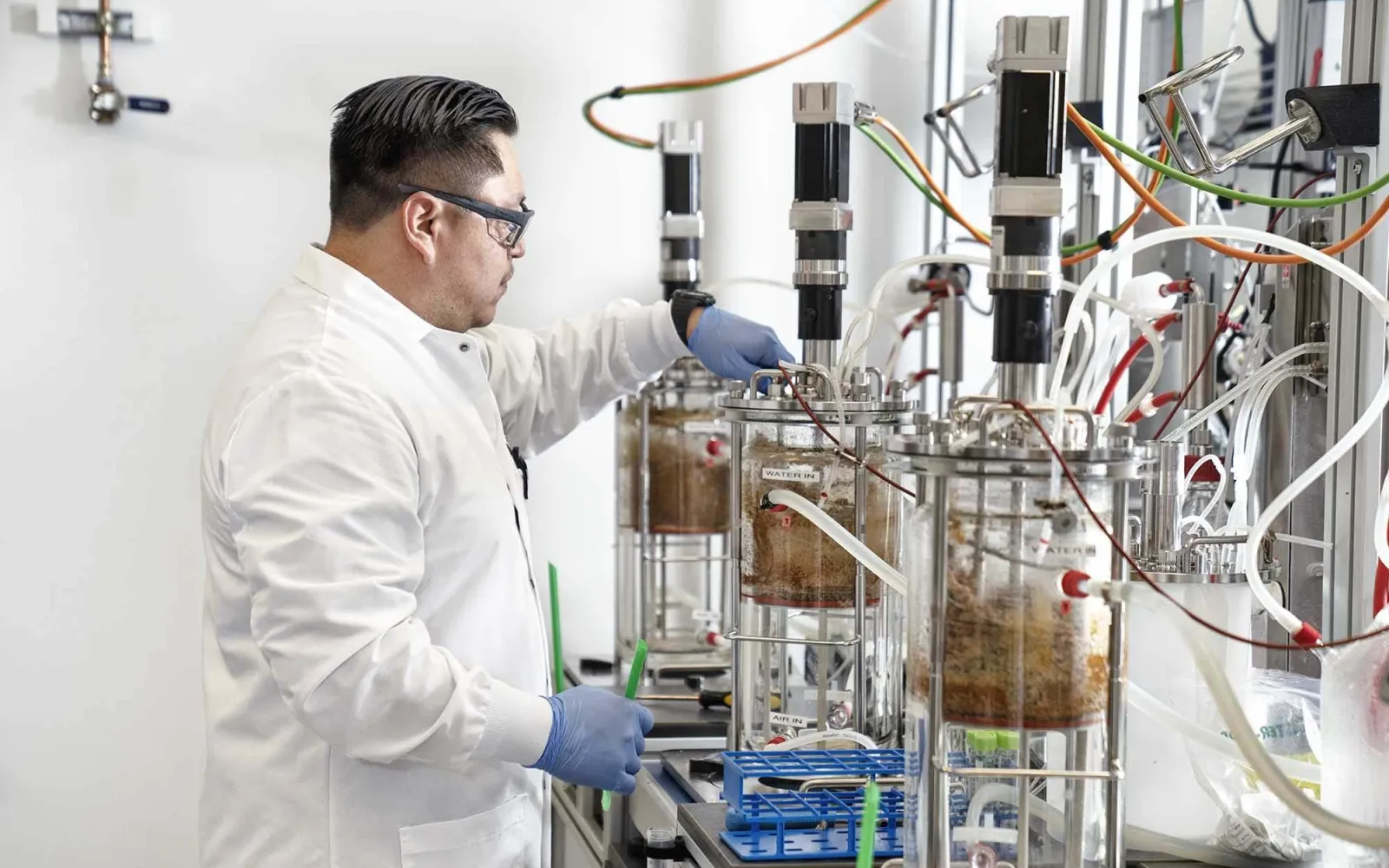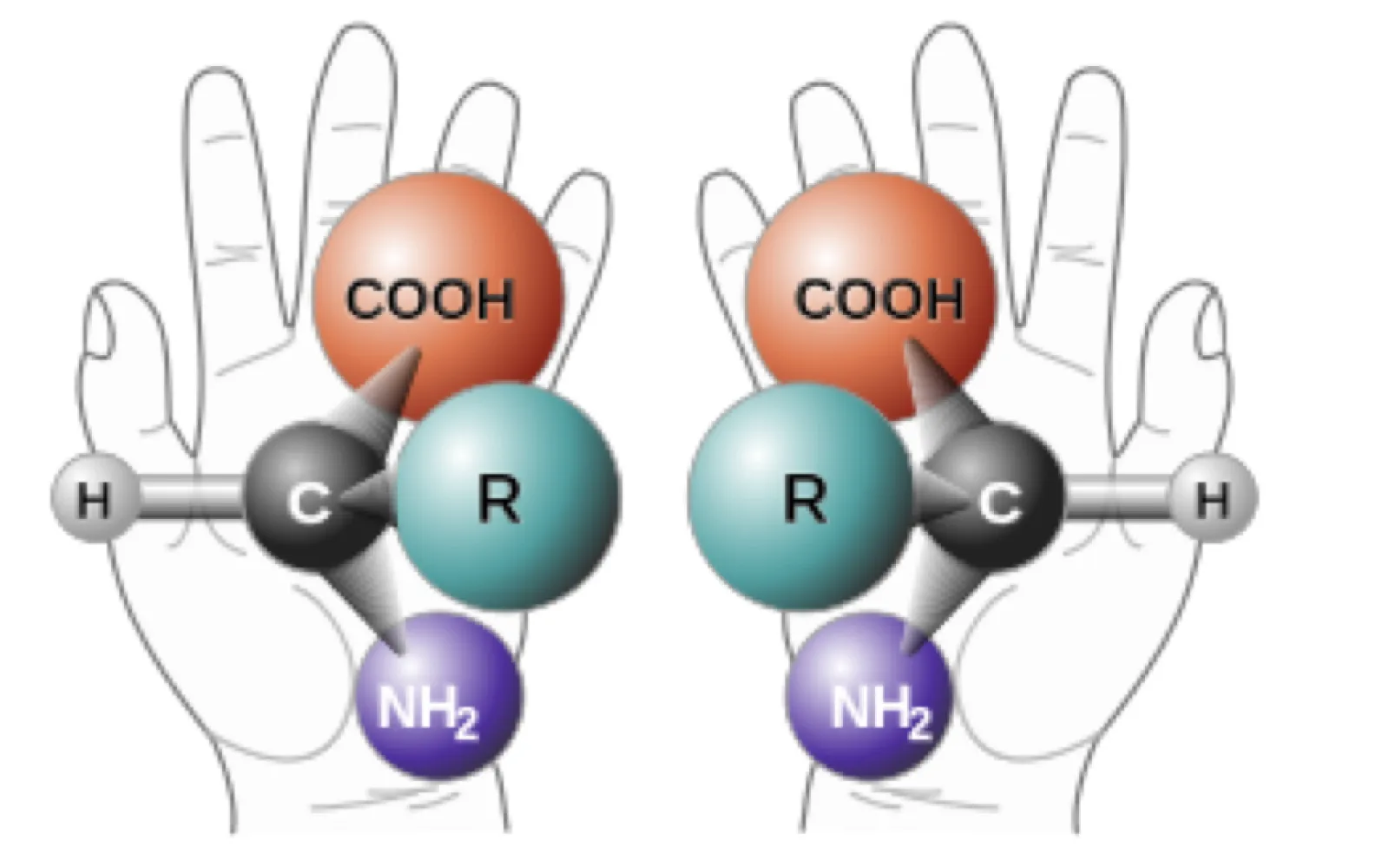

DCVC has doubled down on our investment in Zymergen, the world’s first molecular manufacturing company, able to understand and reliably program biological systems to produce existing and new materials at molecular precision, for up to million metric ton scale and beyond. With over half a billion dollars of Zymergen-driven products shipped in the last 12 months alone by global F1000 companies, Zymergen’s success is not a question for us anymore of “how will they do it?” but of “how dominant can they get?”
By leveraging advances in artificial intelligence, robotic lab automation, and cutting-edge genomics, Zymergen has unlocked previously inaccessible sources of molecular diversity for critical industries around the world. With its proprietary technology platform, the company makes novel and improved molecules to meet the greatest needs of global leaders in manufacturing, specialty chemicals, food and agriculture, electronics, and pharmaceuticals. Zymergen delivers its customers material diversity and performance capabilities not previously possible by rapidly, reliably, and cost-effectively engineering biology. Today, Zymergen is enabling real-world product outcomes for Fortune 1000 customers that are orders of magnitude greater than any other similar approach, at 100,000 metric ton and greater scales. And, as a material additional benefit, Zymergen’s transformation of industrial processes very often reduces greenhouse gas emissions and toxic byproducts by very large amounts.
To achieve these results, Zymergen uses artificial intelligence algorithms and robotic genomic “factories” to search the microbial genome, running tens of thousands of experiments to spot subtle signals of improvement. The platform then analyzes these signals to identify paths that no human scientist could ever discover, enabling Zymergen to optimize molecules for specific traits. Zymergen’s platform routinely accomplishes inside a year, in a single building, with a few hundred people, what would take thousands of scientists and specialists a decade, in square miles of facilities, and billions of dollars of spend. Zymergen enables its globally leading customers to deliver new and existing products faster, more profitably, at higher quality, with a dramatically reduced environmental footprint, all on a repeatable basis.
Harnessing microorganisms for human purposes isn’t a new practice; fermentation emerged in 7000 BC in China, where local brewers mixed rice, honey, and hawthorn fruit to make alcohol. We still use yeast to ferment our favorite drinks, but microbes have slipped into many other products as well. The glass of milk you drank this morning was safe thanks to microbes, and some of the pills your doctor prescribes wouldn’t exist without them. Industrial microbes – microbes that manufacture useful things — are key components in the food and beverage industry, medicine production, and chemical manufacturing.
Industrial microbiology is a multi-billion dollar market, and tens of thousands of scientists and experts continuously work to improve the microbes they use. Microbiologists have traditionally made better microbes by:
a. selecting and cultivating the best-performing strains,
b. inducing mutations in the hope that some mutations would be helpful, or more recently,
c. manipulating the microbial genome.
Cultivating microbes was the only improvement process available until the 1940s, when scientists jumpstarted the science of “strain selection” while scaling penicillin production. The first high-performing strain they selected nearly tripled penicillin secretion from 60 micrograms per milliliter to 150. They exposed later strains to x‑ray and ultraviolet radiation, which eventually led to the Wisconsin family of microbes that manufactures most penicillin today.
Careful selection and radiation exposure alone prompted a hundredfold increase in Penicillium chrsyogenum’s productive capabilities — an impressive feat. But after decades of repeated use for this and a host of other applications (many involving yeast), selective curation and uncontrolled mutation became less effective tools.
Scientists began searching for ways to manipulate the bacterial and yeast genomes directly with genetic engineering tools. This process, even with deep genome sequencing, proteomic tools for understanding what molecules genomes produce, and some improvements in automation and lots of computer power, turned out to take the best companies in the world years if not decades and billions of dollars.
The problem is our incomplete knowledge of which microbial genes influence which characteristics that can be tuned in microorganisms to produce human useful molecules while leaving the living systems viable and able to reproduce. Unfortunately, as this influential Zymergen blog post explains, “all microbes have significant (25%+) ‘dark regions’ in their genomes in which the functions of constituent genes are completely unknown.” Finding the right portion of microbial DNA to manipulate is a shot in the dark, and even F1000 companies full of smart folks have met with failure on many key projects.
Our bacterial (and similarly, fungal/yeast) genome map is patchy in part because of its unbelievable size. Conservative estimates of the design space — “all the combinations of all the base pairs in a microbe’s DNA” – are around 4 raised to the power of 3,000,000. This volume of possible combinations prevents even the most skilled microbiologist, or entire teams of them, from knowing how genetic changes will impact bacteria. Even with the increasing pace of genetic research, the sheer size of this space means that much of it will remain uncharted for decades.
Zymergen is sidestepping this enduring knowledge gap by having algorithms (not scientists) make and test hypotheses about microbe performance. Their AI software sends experiment instructions to an automated robotic platform, which carries out the experiments and sends the results back to the software. The results of past experiments determine which genes are edited in future ones, in a powerful closed loop learning process that is well suited to deep learning innovation. This platform significantly reduces human error and carries out experiments more than 1000 times faster than a researcher could manually perform, even a large team of researchers.
Zymergen’s scientists do not have to know in advance how each genetic change influences the microbes. To quote Zymergen CTO Aaron Kimball: “We get paid because it works, not because we understand why”. This outcome-oriented approach – delivered on a high-speed, heavily automated, repeatable, and verifiable platform –puts Zymergen years (if not decades) ahead of their competition.
Zymergen was founded in 2013 by Josh Hoffman, Dr. Zach Serber, and Dr. Jed Dean. They had all seen large-scale engineering problems in the course of their work: Josh’s as an elite industry consultant at McKinsey and global investment banks, Zach’s as a synthetic biologist, and Jed’s as an automation engineer in the life sciences. The three of them created Zymergen to solve those problems. They aimed to overcome industrial microorganism efforts’ inaccessibly huge design space, large knowledge gaps, and costly drawbacks of human error. Zymergen has solved these microbe engineering problems, and it is enabling massive progress in a related field as well: materials science.
Zymergen is using the microbe genome as a search space for new biomanufacturable chemicals and materials. They call these molecules “bioreachables”, and the databases they’ve built on microbe metagenomics and bioreachables are the world’s largest. Zymergen is working with materials scientists in industry and academia to search the thousands of new molecules they’ve discovered for the most promising commercial candidates.
Zach Serber, Zymergen’s CSO and co-founder, knows that biomanufacturing will shape the future of materials science. He explains that biomanufacturing is better at making certain molecules than petroleum-based processes, which are used in many common materials. For example, biological processes are better at producing:
a) chiral molecules of a particular orientation,
b) molecules made of non-hydrocarbon atoms, and,
c) polymers with diverse chemically reactive groups.
Chiral molecules are asymmetric – their mirror image cannot be transposed on the original. The original and mirror image are called left-hand and right-hand molecules. Chemical manufacturing usually results in an equal distribution of left- and right-hand molecules. Biological manufacturing normally makes only one or the other. This is important because chirality influences how molecules act in a biological setting. Aspartame, the artificial sweeter in Equal and NutraSweet, would taste bitter if you somehow ate the wrong chiral molecule. In a more serious situation, the left-hand molecule of some drugs is beneficial, while the right-hand molecule is poisonous.
Purifying chiral molecules after chemical manufacturing is an expensive process, with purified products sometimes costing a thousand times more than the original mixture. Biomanufacturing makes purification unnecessary because it only produces one type of chiral molecule. Chirality is also important in materials science. PLA, a biodegradable plastic popular in disposable tableware, has thermal and mechanical properties that change significantly with its distribution of chiral molecules. Biological manufacturing makes the selective production of chiral molecules an easier, cheaper process.








